Are you down with vegan nutrition basics and want to take your diet to the next level? This guide on food combining for vegans will be just for you.
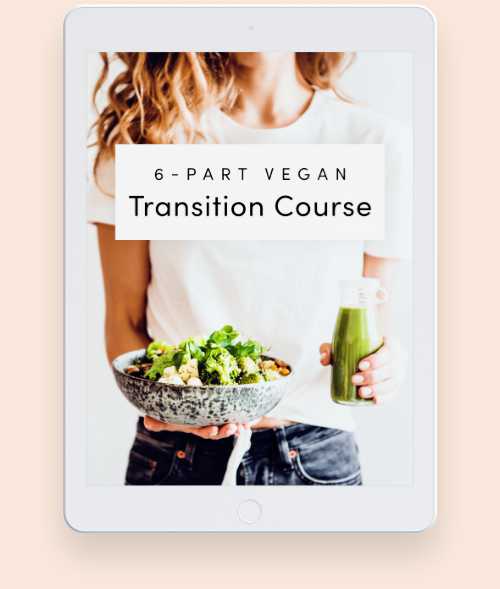
join our free vegan course!
Learn how to thrive on a plant-based diet with practical tips & a 3-day meal plan!
While there is no need to overcomplicate things on a plant-based diet, there are a few ways to increase your nutrient absorption — and others that block it.
Following a handful of food rules can prevent nutrient deficiencies and lead to delicious combinations you might not have thought of!
Find more guides on plant-based protein, soy, B12, oil and vegan cooking basics around our website.
What is food combining?
Food combining is a concept based on the idea that certain foods pair better together than others in terms of their digestibility and health effects.
The theory originally stems from ancient India and involves myths like “eat fruit only on an empty stomach” or “don’t combine carbs and protein.”
These have long been debunked, just like the myth that one needs to eat rice with beans to create a “complete protein.”
However, there is some truth to eating certain foods together! Some pairings can enhance the absorption of nutrients, while others may block it.
Keep on reading to see our favorite food combining tips for vegans!
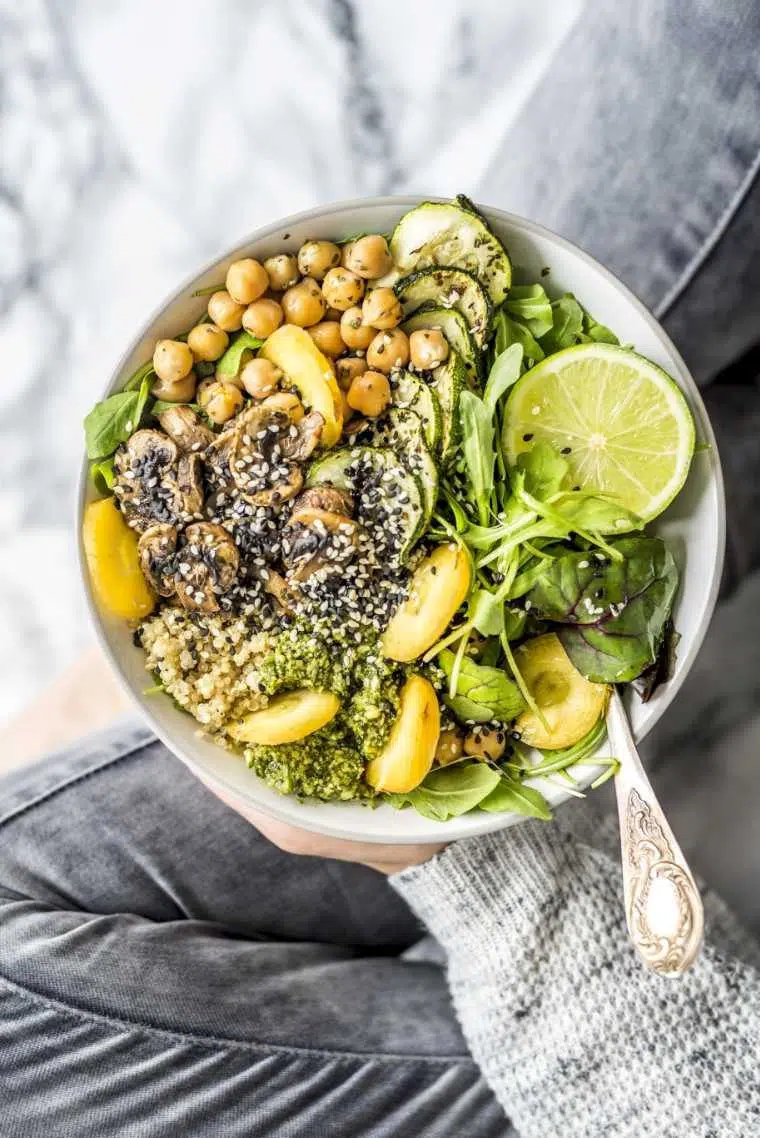
Best food combining tips
In addition to the following pairings, you can increase the absorption of nutrients from your food by chewing well.
Also, consuming critical nutrients like calcium or B12 in smaller doses throughout the day instead of all at once is preferable.
Collard greens & mustard
Collard greens, broccoli, kale and cauliflower belong to the group of cruciferous vegetables. They contain healthy sulfur-rich compounds which can be activated through a couple of methods!
You can either chop them and then wait for 30 minutes before cooking them — or add spices like mustard, radish or wasabi to these veggies.
Check out our collard wraps with mustard dip for an example!
Beans & bell peppers
This is just one example of the many combinations behind the simple concept of eating iron-rich foods with vitamin C-rich foods.
It’s an effective way to increase iron absorption and decrease the ability of phytic acid in beans to block said iron absorption.
Oatmeal & oranges
Oats are not just full of the soluble fiber beta-glucan, but they are also a good source of plant-based iron!
Similar to beans with bell peppers, adding vitamin C-rich oranges to your cooked oatmeal can enhance iron absorption.
Iron absorption tip
Don’t combine iron and polyphenols! If you have beverages like tea, coffee or wine with your oats, they inhibit iron absorption — wait for 1-2 hours until consuming them.
Carrots & hummus
Hummus is usually made with tahini and olive oil, two healthy sources of fat. These can help with the absorption of beta-carotene found in carrots, bell peppers and other orange foods!
Beta carotene is found in plants and used to create vitamin A in the body — an essential nutrient that is, in its preformed version, only found in animal products.
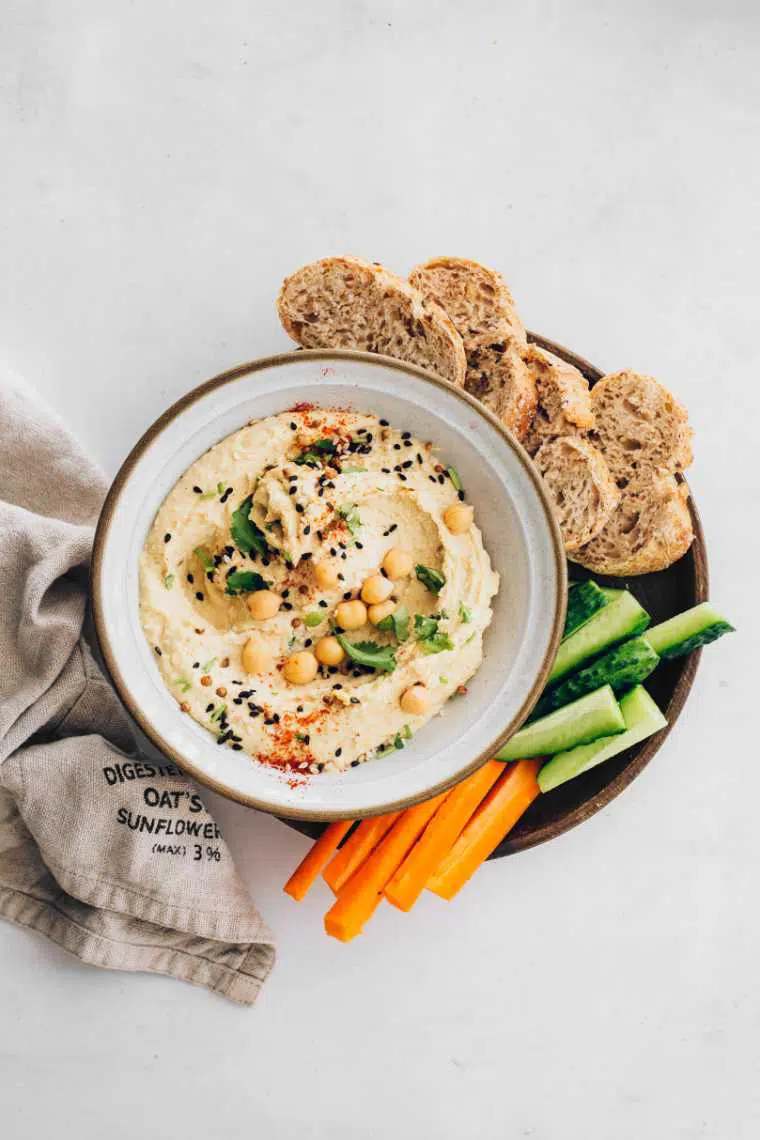
Tomatoes & avocados
You know what that means: salsa and guacamole! Better yet, if you use cooked salsa compared to fresh pico de gallo: the lycopene content in tomatoes is better absorbed once they are cooked.
The mono-unsaturated fats from the avocado aid even more in lycopene absorption — plus, this combination is really delicious.
Salad & seeds
Similar to the food combination above, if you eat leafy greens with shredded carrots and top your salad with pumpkin seeds, sunflower seeds or use an olive oil-based dressing, you can increase the nutritional value of your meal very quickly!
Leafy greens and tomatoes are also a good iron and vitamin C combo.
Pasta with onion & garlic
Whole wheat pasta is a source of zinc and iron on a plant-based diet. You can increase the bioavailability of these nutrients in grains or legumes by eating them with onion and garlic!
Thanks to their sulfur content, minerals like zinc and iron can be better absorbed and a good pasta sauce just needs onion and garlic in it, anyway.
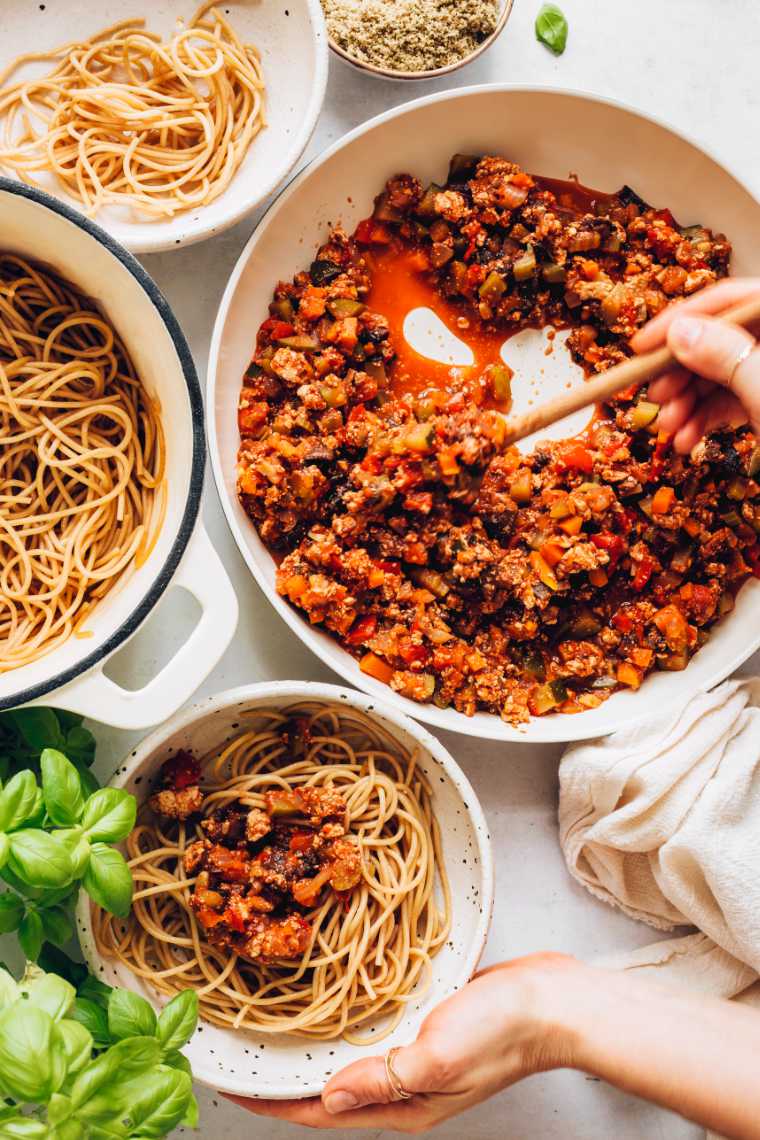
Beans & spices
Do legumes make you feel bloated? Here are some tips for easier digestion! You can decrease the number of anti-nutrients found in beans and legumes by soaking them in water with baking soda for at least a couple of hours.
Then, drain and cook them and serve with spices like cumin, ginger, dill, thyme or fennel to decrease any possible gas production even further.
Pita & falafel
This combination is not only delicious, but the properties found in legumes like chickpeas (which is the basis of falafel) reduce the blood sugar spikes caused by white flour products — like pita bread or other white bread and pasta.
If you add crunchy raw veggies and creamy cashew sauce, their fiber helps slow down the carbohydrate absorption even more! See our falafel taco recipe for a great example.
Turmeric & black pepper
These two spices on their own already have health benefits — but if you combine the curcumin from the turmeric and piperine in the black pepper, you can enhance absorption up to 2000%!
Turmeric’s curcumin is said to have anti-inflammatory effects and may help with other health issues (more studies are needed.)
The best ways to combine them are in curries or our two following recipes!
Supplements & fat
Taking your omega-3 or vitamin D supplements when you eat supports their absorption. How cool is that?
Even though these two supplements usually come with additional oil, eating even more fat is supportive!
A salad dressing, tahini sauce or avocado with your meals can go a long way here.
Vitamin D & calcium
These two nutrients work together to create healthy bones!
Be sure that you get enough of both of them and take your vitamin D supplement together with a meal that contains soy yogurt, soy milk or tofu.
More nutrition guides
Check out the following articles for more tips around plant-based eating!
Which of these combinations did you know already? Which ones would you like to try next? Share with us in the comments below and Pin this article here!
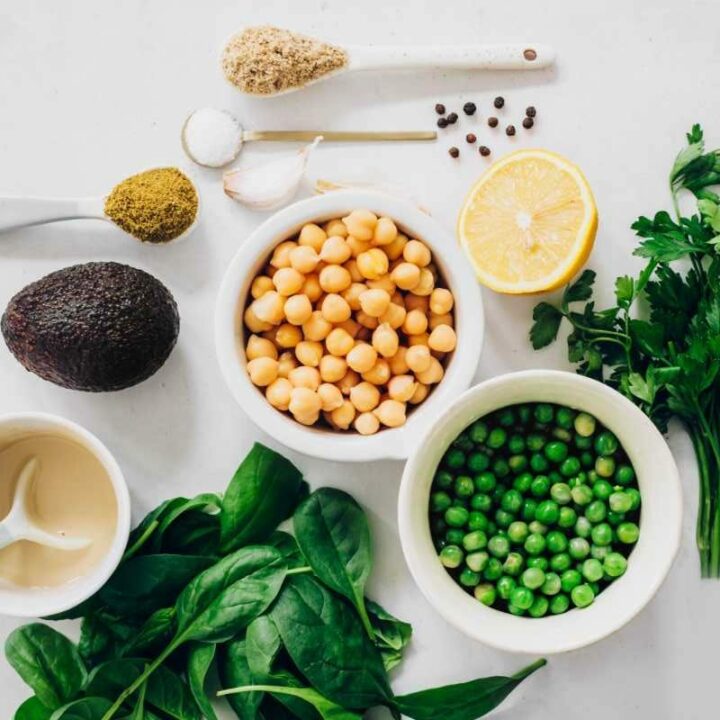
12 Easy Food Combining Tips for Vegans
Is food combining important and what do vegans have to look out for? Let’s take a look at myths, science and easy tips.
Ingredients
- Beans & bell peppers
- Oatmeal & oranges
- Carrots & hummus
- Tomatoes & avocados
- Salad & seeds
- Turmeric & black pepper
- Collard greens & mustard
- Pasta & onion or garlic
- Beans & spices
- Pita & falafel
- Supplements & fat
- Vitamin D & calcium
Instructions
- Eat these foods together for better nutrient absorption.
- Find details in the article above and check our recipes for more inspiration!

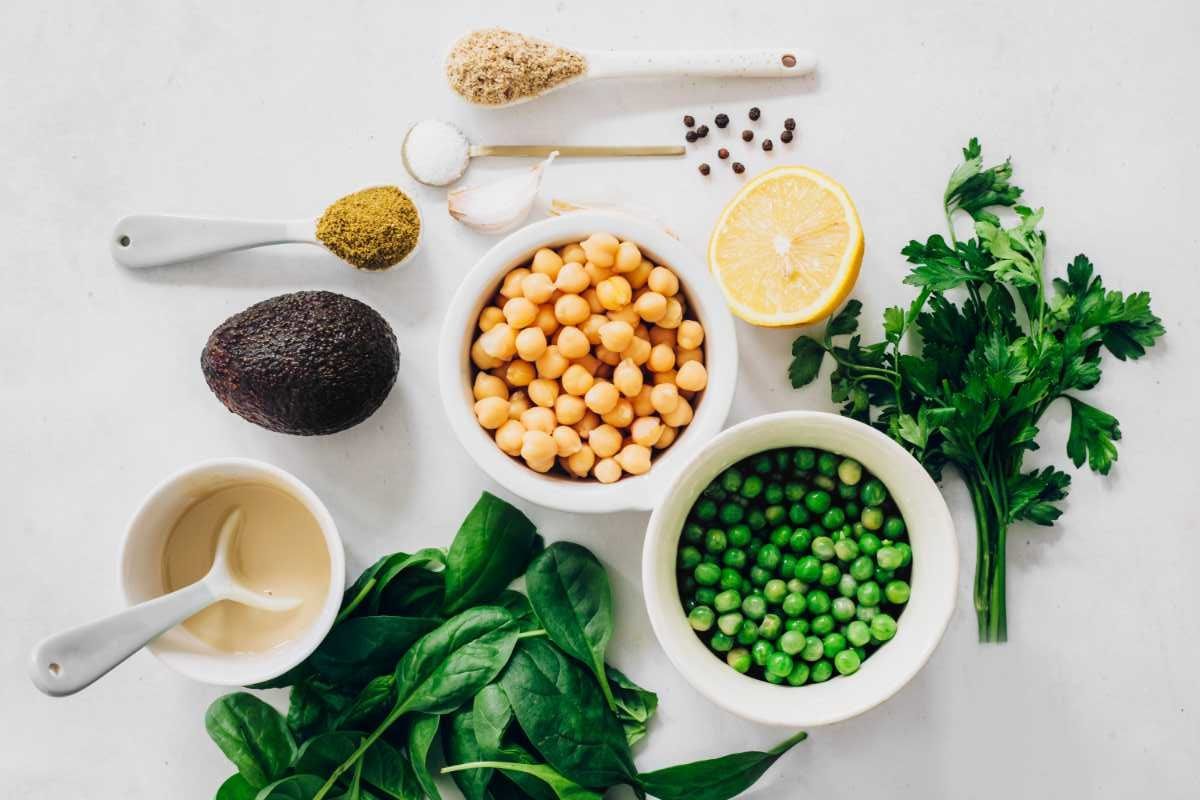
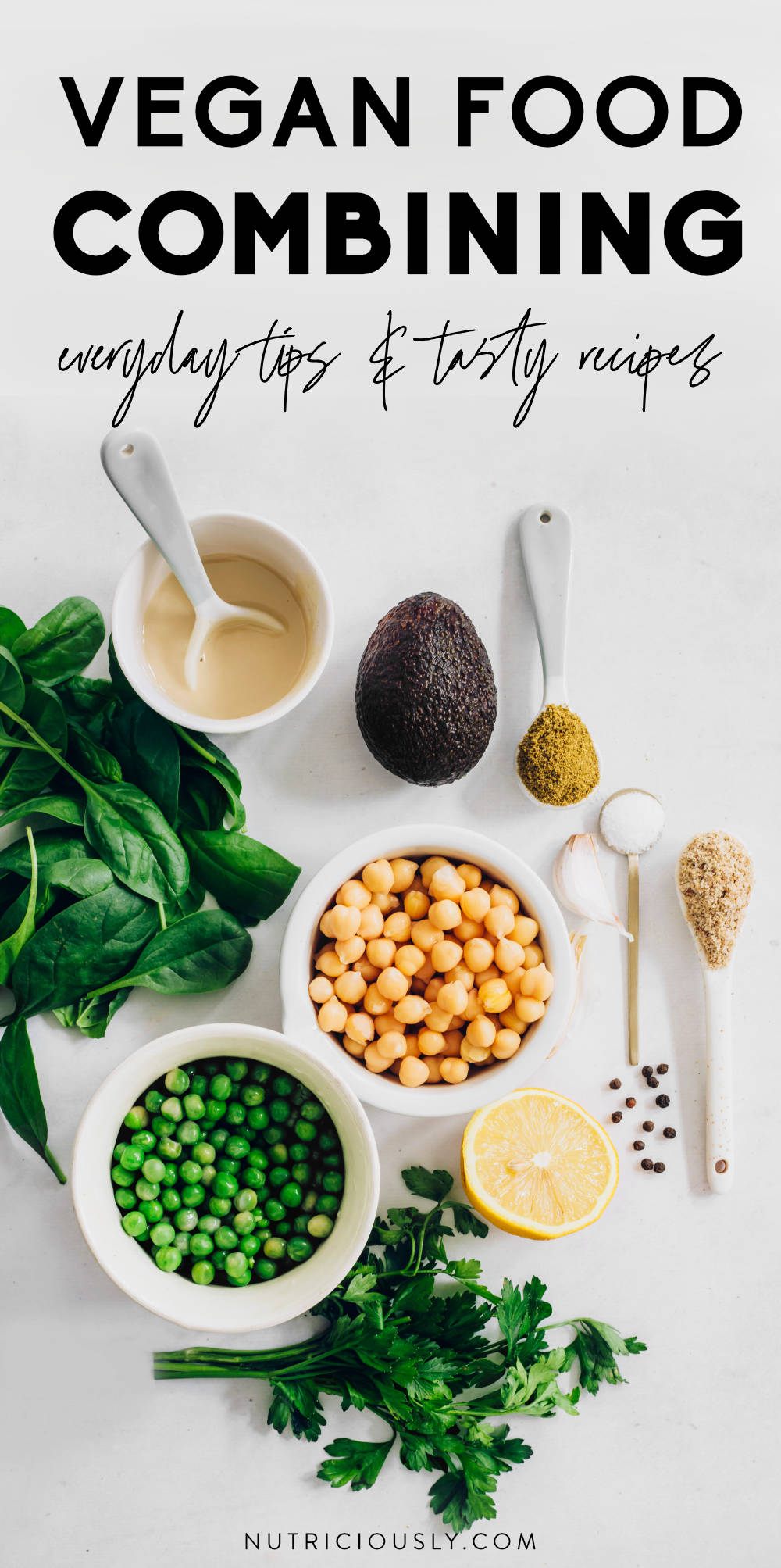
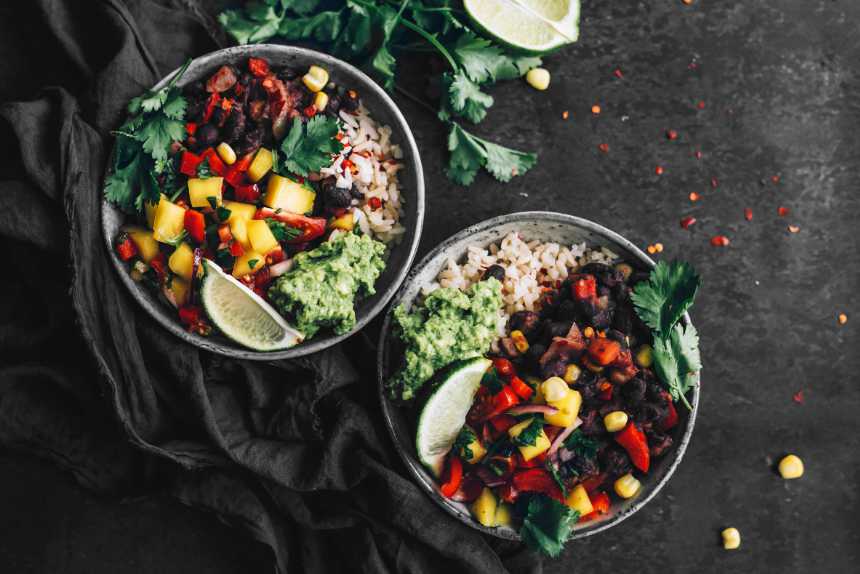
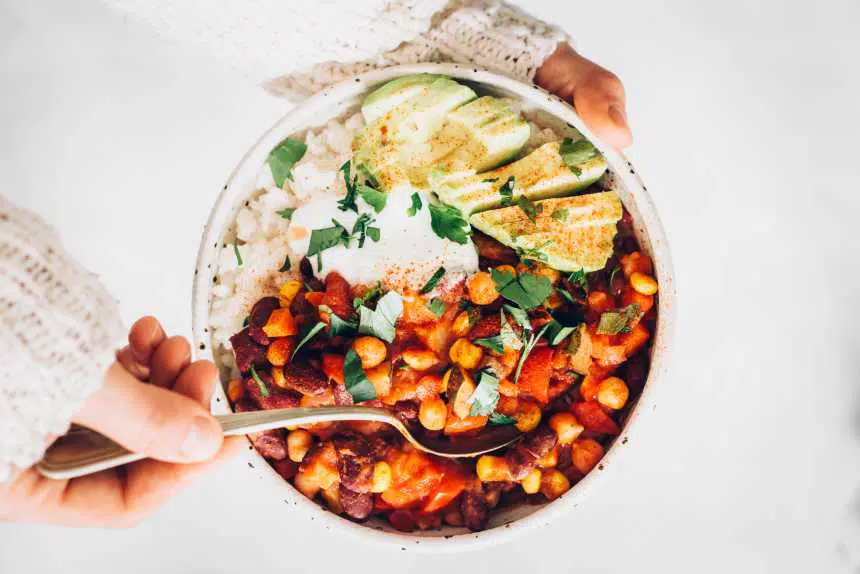
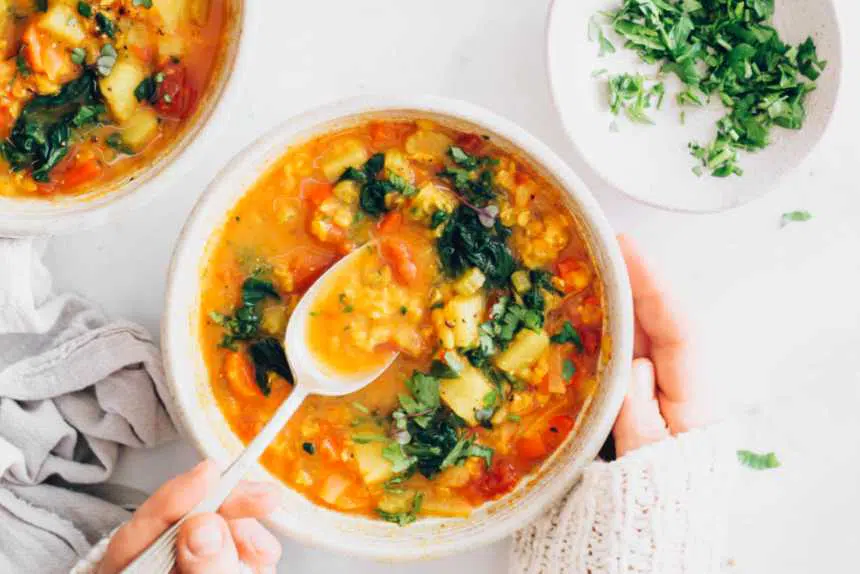

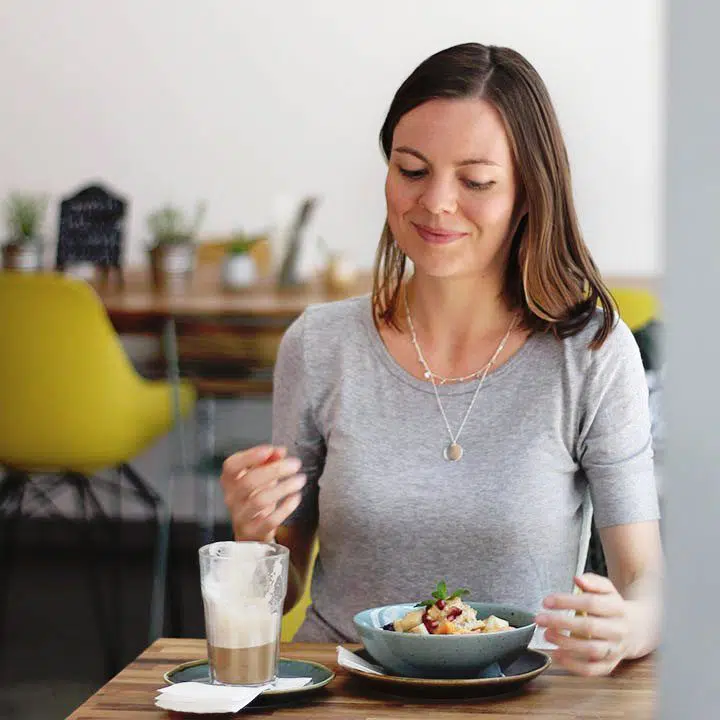
 Alena Schowalter is a Certified Vegan Nutritionist who has been a vegetarian since childhood and vegan since 2012. Together with her husband, she founded nutriciously in 2015 and has been guiding thousands of people through different transition stages towards a healthy plant-based diet. She’s received training in the fields of nutrition, music therapy and social work. Alena enjoys discussions around vegan ethics, walks through nature and creating new recipes.
Alena Schowalter is a Certified Vegan Nutritionist who has been a vegetarian since childhood and vegan since 2012. Together with her husband, she founded nutriciously in 2015 and has been guiding thousands of people through different transition stages towards a healthy plant-based diet. She’s received training in the fields of nutrition, music therapy and social work. Alena enjoys discussions around vegan ethics, walks through nature and creating new recipes.
Is food combining important and what do vegans have to look out for? Let’s take a look at myths, science and easy tips.